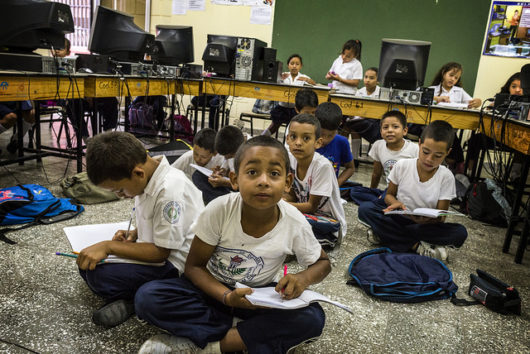Top 10 Facts About Living Conditions in Honduras

Honduras, a small country between Nicaragua, El Salvador and Guatemala, is home to 9 million people, some of whom are direct descendants of the Mayan civilization.
Both rural and metropolitan regions of Honduras have enormous hurdles to overcome, but in recent years, they have made considerable strides toward ensuring long-term prosperity and security.
In the article below, top 10 facts about living conditions in Honduras that detail the successes and setbacks of the country are presented.
Top 10 Facts About Living Conditions in Honduras
- In 2016, the Honduran government declared a national emergency regarding the Zika virus. In response to the emergency, cooperation with various humanitarian aid organizations, such as UNICEF and the national child protection institution called Direccion de Infancia, Adolescencia y Familia (DINAF), resulted in a 99 percent decrease in newly reported cases in 2017. While this reduction is a massive improvement, especially in the span of one year, there are still around 191 cases of Zika that require proper education and care.
- In recent years, the homicide rate in Honduras has fallen significantly. While the homicide rate decreased by approximately 30 percent between 2012 and 2016, it is still one of the highest in the world with 59.1 homicides per 100,000 inhabitants per year. Honduras, El Salvador and Guatemala form a particularly violent region plagued by political corruption, drug trafficking and post-war instability known as Central America’s Northern Triangle.
- A large portion of Honduras is part of the Dry Corridor. The Dry Corridor is an area of Central America that has been experiencing prolonged and more frequent droughts in recent history. This area covers the central-southern region of Honduras that are often hit by water shortages and dwindling agricultural yields. In years of extreme weather conditions, crop losses are reported to be as high as 60 percent in areas of maize production and 80 percent in regions of beans.
- Food insecurity remains a serious problem, especially in rural areas. In the past four years, ceaseless drought has amplified this issue. Twenty-three percent of children under the age of 5 across the country experience stunted growth. The rate of stunting jumps up to 40 percent in areas of the Dry Corridor.
- The poverty rate in Honduras is among the highest in Central America. Data from 2016 show that more than 66 percent of the total population is living in poverty, with higher concentrations along the southern, western and eastern borders. These are rural areas that overlap significantly with the Dry Corridor, creating a region where roughly 20 percent of the people experience extreme poverty, defined as living on less than $1.90 a day.
- Honduras relies heavily on the production of renewable energy. Out of the total electricity produced in Honduras, 32 percent comes from a combination of different renewables, and in addition, 25 percent comes from hydroelectric alone. This positions Honduras above the United States, Japan and Spain in global rankings measuring a country’s percentage of total electricity produced from renewable sources. One plant in Nacaome has created more than 300 jobs since it’s development and more similar projects are underway all across Honduras.
- The city of San Pedro Sula in northwestern Honduras was once known as the most violent city in the world. Pervasive drug cartel presence in the area fuels much of the violence. In 2013, the murder rate was at staggering 168 homicides per 100,000 people. In 2015, the city was able to rid itself of this undesirable title after local government partnered with UNICEF Honduras, Asociacion Colaboracion y Esuerzo, the Ministry of Education and many other organizations to develop programs focused on providing educational resources for young people and families who are victims of the violence.
- Sanitation and clean drinking water are nowhere near ubiquitous for the most vulnerable populations in Honduras. More than 630,000 people lack access to clean drinking water and one million lack access to sanitary human waste management facilities. In 2004, the World Bank funded Honduras Water and Sanitation Sector Modernization Project that decentralized water and sanitation utilities, giving more control to small municipalities. The project has improved water services for 108,000 families and sanitation services for almost 4,000 families.
- The distribution of wealth and resources is among the worst in the world. According to the most recent World Bank data on income disparity, Honduras is the second most inequitable country in Central America. Urban areas possess the vast majority of wealth and resources. More than half of the population that is considered to be living in extreme poverty resides in rural areas, many of whom are indigenous peoples.
- Access to reliable sources of credit is limited but improving. For the most susceptible parts of Honduras, micro-lending programs are providing solutions outside of traditional banks. In addition to proving more than 400,000 Hondurans living in rural areas with financial education and services, the United Nations Development Program (UNDP) has created a microcredit program in the form of 77 local investment projects that are facilitating entrepreneurship in 26 municipalities in western Honduras.
The urban centers of Honduras are making significant advances in the face of extreme economic instability, sociopolitical strife and rampant crime.
In rural regions, a harsh, ever-changing climate looms while international aid programs focused on infrastructure, food security and financial independence provide crucial assistance.
These top 10 facts about living conditions in Honduras help illustrate that the country has the potential to drastically transform itself to better serve its people, as well as the global community.
– John Chapman
Photo: Flickr
